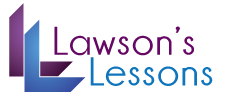Communication is…
TOPIC: Communication Models
OBJECTIVE: After this lessons. The students will be able to divide a speech into the parts which organize the speech and to evaluate a speech.
Materials: Blank sheets. (The students who have to give a speech need to prepare the speech.)
Steps:
1. The teacher teaches about the communication model using Aristotle’s model of communication and Berlo’s model of communication.
2a. After the lecture by the teacher, at least two students give a speech. (The speech is supposed to be persuasion speech or informative speech.)
2b. Watch at least two speeches on video.
3. While one student is giving a speech, the other students take notes using the categories by Aristotle’s model of communication and Berlo’s model of communication. (Invention, Arrangement, Style, Memory, Delivery)
(Who says what, to whom, in what channel to what effect)
4. The students who do not give a speech speak what they found in the speech. (Evaluation) (They sometimes found missing parts of the speech, so it leads the speaker make better speech.)
Results: The students should notice how a speech is organized.
Models are tools for examining communication.
Azusa Minoda
Staying in the “Loop:” Elements of Effective Communication
Models of communication
OBJECTIVE: After completing the lesson, students will be able to explain the parts of the communication process, recognize internal and external barriers to communication, and identify the best type of communication.
MATERIALS: White/chalk board with the communication loop drown on it; enough blank white paper for each student; a copy of the activity diagram; effective communication handout
STEPS:
1. Before class beings, draw a communication loop on the white/chalk board.
2. Introduce students to the subject of effective communication by asking students to remember examples of miscommunication in their own lives. Discuss the situations with them, and ask students to propose reasons why communication was not effective.
3. Wrap up discussion by explaining that all the problems the students brought up were likely caused by a breakdown in the communication process.
4. Give students the “Effective Communication” handout. If you’d rather students take their own notes, it can also be used as an overhead.
5. First, discuss the communication loop with students. After discussing “sender,” ask students to name some of the ways people communicate. Answers should include talking, writing, symbols, nonverbal communication, and pictures/charts/diagrams.
6. Continue discussing the information on the handout, all the way through to the end.
7. Introduce the communication activity by explaining that miscommunication occurs very easily if transactional communication is not used.
8. Ask for or choose a volunteer to start the communication activity, and hand him or her the communication activity diagram without showing it to the rest of the students. Explain to the volunteer that he or she must stand with his or her back to the class and verbally describe the diagram to the rest of the class. The volunteer can make absolutely no eye contract with the class and cannot use gestures or any other means of describing the diagram. The class also cannot ask any questions of the volunteer.
10. After the students finish drawing, show the class the correct diagram and have them compare it to their own drawings.
11. Discuss the following questions with the students:
—Which type of communication was this? How can you tell? (One-Way Communication; it was centered on getting the instructions across without checking if the students understood the directions)
—What elements of the communication process were missing? How did this affect understanding? (Feedback; sender/receiver interaction; nonverbal communication)
—How many people got confused and stopped listening? Why?
12. To wrap up, explain to the students how this activity proves how easy it is for miscommunication to occur, especially when parts of the communication process are absent.
RESULTS: For homework, students will think of one instance of miscommunication in their lives and pinpoint what internal/external barriers caused the problem and how it could have been fixed. The next day, they will be divided into groups of three and discuss what they’ve discovered. The next topic to be discussed would be active listening.
Effective Communication
Communication—the process of sharing ideas, thoughts, and feelings with others and having them understood by those we are talking with. Communication involves speaking, listening, and observing.
The Communication Loop
Sender—the person sending the message
Message—Communication in writing, speech, or by signals (including nonverbal communication)
Receiver—the person receiving the message and making sense of it
Feedback—Verbal or nonverbal reaction from the receiver
***Effective communication is a two-way process, involving both the sender and receiver; it must involve the sender getting the intended message across to the receiver.
Communication Barriers—prevent us from understanding others’ verbal and nonverbal messages
*Internal—include fatigue, poor listening skills, negative attitude toward the sender or information, lack of interest in the message, fear, mistrust, past experiences, problems at home, lack of common experiences, and emotions
*External—include noise, distractions, e-mail not working, bad phone connections, time of day, sender’s use of too many technical words, and environment
Types of Communication
Self-Action/One-Way Communication—focused on getting the message to the receiver; treats communication as a manipulation of others; very message-centered
Interaction/Two-Way Communication—recognizes the role of the receiver as a communicator through feedback; message-centered; feedback allows senders to know if their message was understood
Transaction—focuses on meaning and sharing by accounting for all other factors in the communication process
*The communication process is applied and carried out completely.
—Sender gives a message to receiver; receiver gives clear feedback that lets the sender know if the message was perceived correctly; if it was not received as intended, the sender continues the communication process until effective communication occurs.
*This can best be described as EFFECTIVE COMMUNICATION!
Nicole Peters
September 23, 2009
